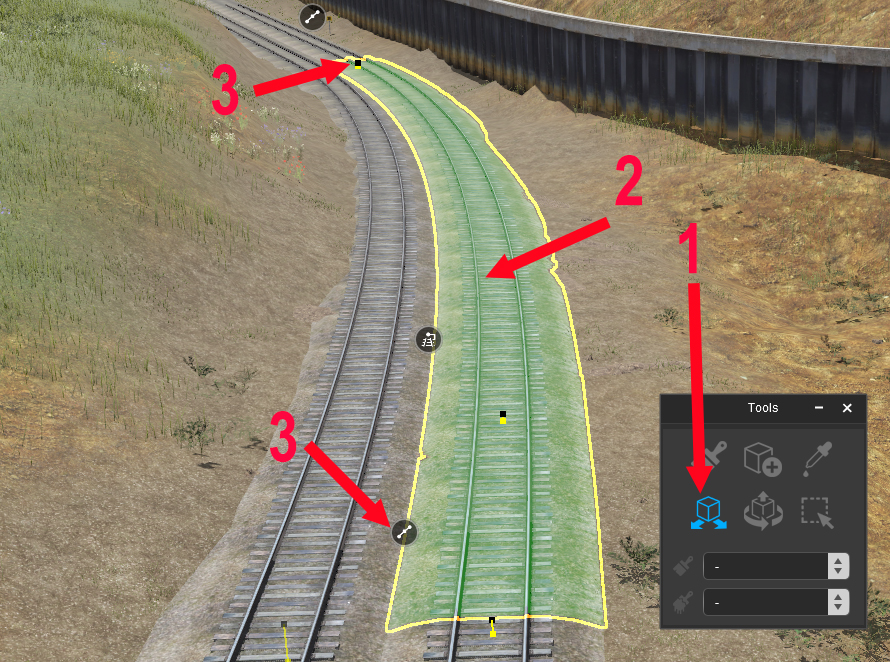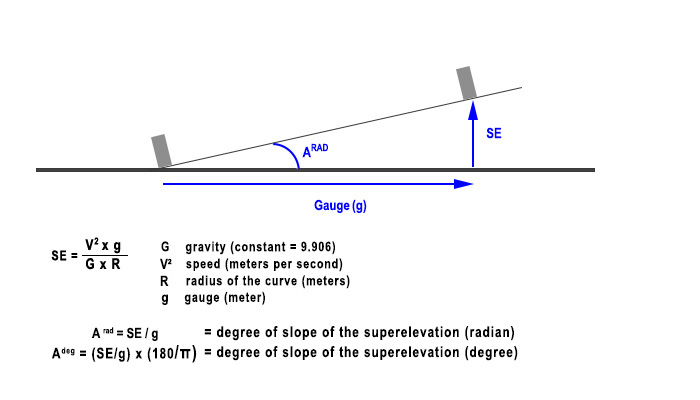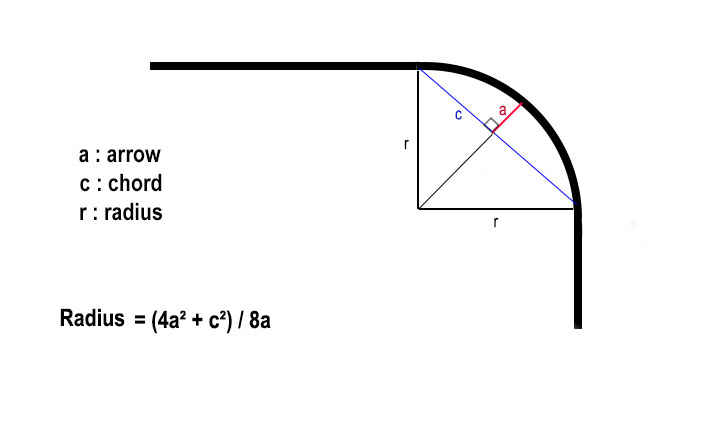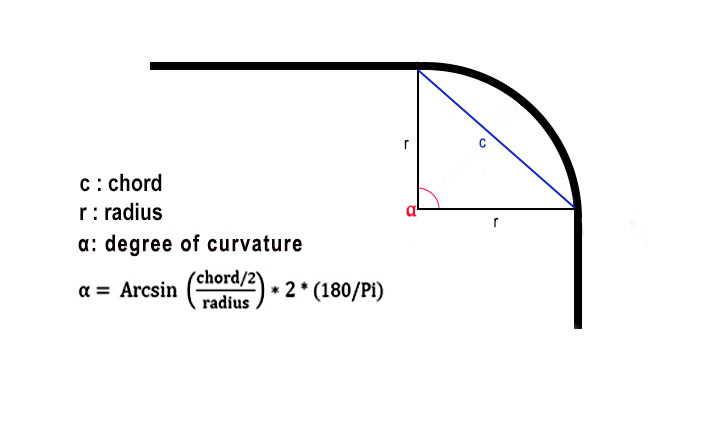Superelevation Trainz22
(→Surperelevation : theoritical base) |
(→Surperelevation : theoritical base) |
||
| Line 54: | Line 54: | ||
</tr> | </tr> | ||
</table><br><br> | </table><br><br> | ||
| − | To apply superelevation in Trainz, we saw above that we had to calculate the 'superelevation degree'. More precisely, this means to determine the angle of the slope by degree of the concerned curvature.<br> | + | <table> |
| − | Example: we have a curve with a curve angle of 60° and a superelevation angle of 4°. The 'superelevation degree" will be equal to 4/60 = 0.066. | + | <tr> |
| − | + | <td width=100><td width='400'> | |
| + | To apply superelevation in Trainz, we saw above that we had to calculate the 'superelevation degree'. More precisely, this means to determine the angle of the slope by degree of the concerned curvature.<br> | ||
| + | Example: we have a curve with a <b>curve angle</b> of 60° and a <b>superelevation angle</b> of 4°. The 'superelevation degree" will be equal to 4/60 = 0.066. | ||
| + | </tr> | ||
| + | </table> | ||
Revision as of 20:00, 1 October 2024
Superelevation with Trainz 22
The "superelevation" or the slope of rails in curves is proposed since T:ANE. This page updates the instructions for Trainz 22
Implementing Superelevation
To resist centrifugal force and and not to wear out prematurely the outer rail, the track must be tilted on bends.
Applying a gradient to a curved section of track is called superelevation.
Here is the example of a machine launched to 80 kph in a curve of 500 meters of beam. The slope of the track has been set to 4 °.

To implement Superelevation in Trainz 22, follow the steps below :
| On the tools palette,select the highlighted icone as shown on the opposite picture (1)
Clic on the track to select it (2) Clic on one of the submits of the selected track (3) |  |
Surperelevation : theoritical base
The al
- The Superelevation is the height that the outside rail takes compared with the internal rail in a curve.
It is calculated as the plan below shows it:

- Of the four variables above (G, V, R,g), one is unknown at the start: the radius of the curve.
The diagram below shows how to determine it :

- Trainz 22 introduces an aditionnal concept for determining the superelevation of a curve: the degree of curvature.
| Here, with a quarter-circle curve, the curve angle is 90°.
The more open the curve, the greater the angle. The tighter the curve, the smaller the angle. |  |
To apply superelevation in Trainz, we saw above that we had to calculate the 'superelevation degree'. More precisely, this means to determine the angle of the slope by degree of the concerned curvature. |
Every country has its own standards of superelevation. We find them rather easily on the internet.
In France, the superelevation does not have to exceed 16 cms (6.3 inches) in standard gauge tracks and 10 cms (3.94 inches) in metrics.
